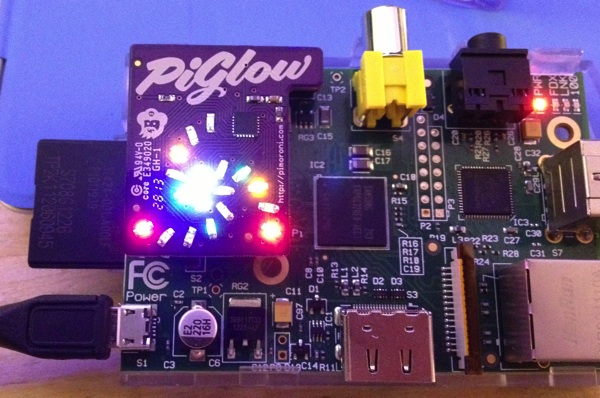
A Piglow glowing
A few days ago I got a Piglow. It’s a fairly useless but fun addon board for the Raspberry Pi that has 18 individual user controllable LEDs arranged in Arms/Legs/Tentacles (whatever you want to call them).
There are example programs out there to control the LEDs, but they are all in Python, and on my Pi they are all fairly slow so I wrote my own lib for Go: https://github.com/wjessop/go-piglow
The API is fairly strigthtforward, this sample program just turns on and off some of the LEDS:
package main
import (
"github.com/wjessop/go-piglow"
"log"
)
func main() {
var p *piglow.Piglow
var err error
// Create a new Piglow
p, err = piglow.NewPiglow(); if err != nil {
log.Fatal("Couldn't create a Piglow: ", err)
}
p.SetLED(0, 255) // Set LED 0 to 255 (max brightness)
p.SetLED(1, 128) // Set LED 1 to half brightness
err = p.Apply(); if err != nil { // Apply the changes
log.Fatal("Couldn't apply changes: ", err)
}
}
The lib API allows for controlling individual LEDs, the colour rings, the tentacles, or to display a value bar-graph style on each tentacle.
I wrote some more complex example programs to go with the lib to demo these capabilities. A simple program to flash the LEDs, a CPU meter that displays 1, 5 and 15 minute load average on each of the tentacles, and the most fun, a disco program, here is me demonstrating them:
Right now i’m running this program on my Pi to slowly fade between the colour rings.